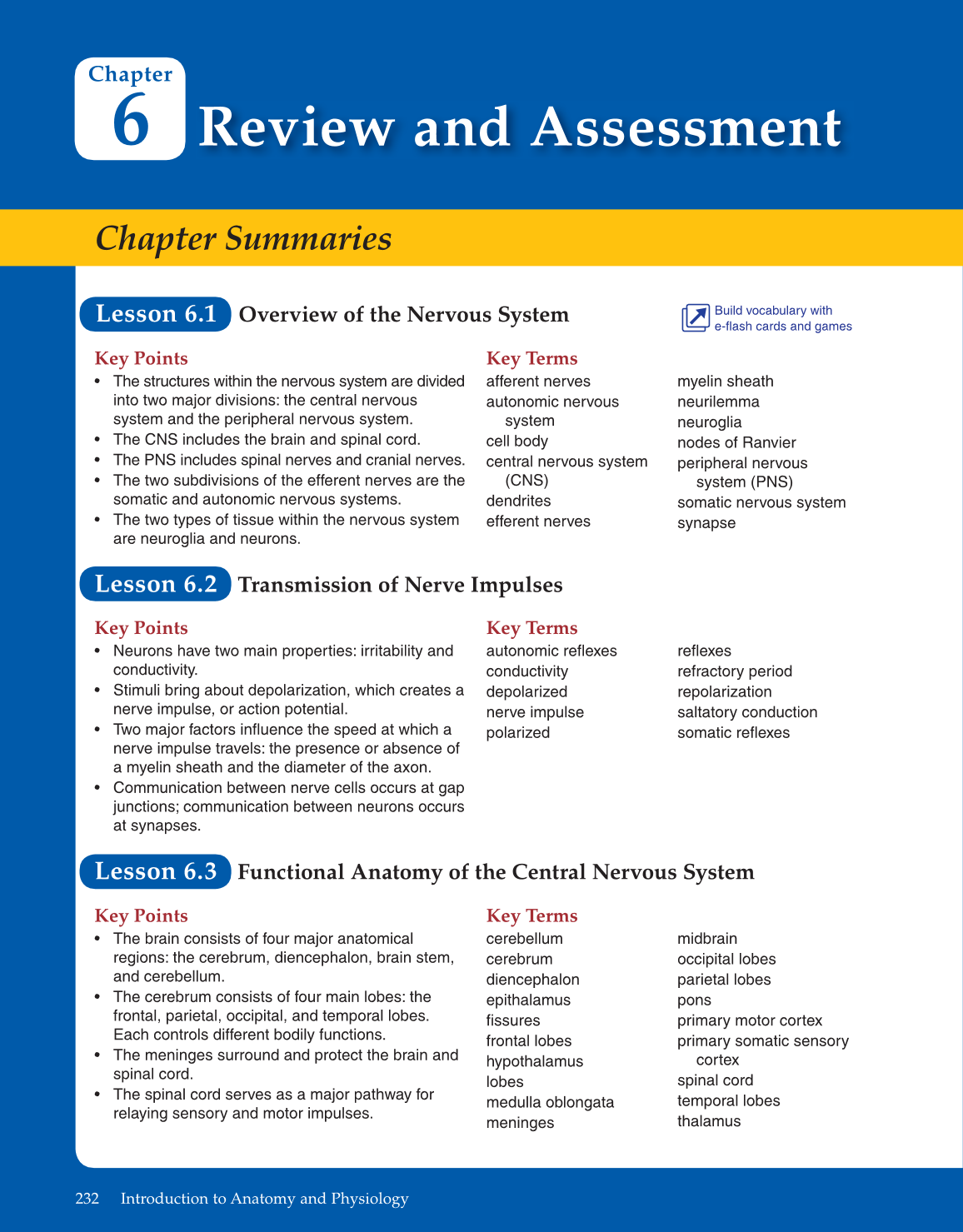232 Introduction to Anatomy and Physiology
Review and Assessment
Chapter
Build vocabulary with
e-fl ash cards and games
Lesson 6.1
Overview of the Nervous System
6
Chapter Summaries
Key Points
• The structures within the nervous system are divided
into two major divisions: the central nervous
system and the peripheral nervous system.
• The CNS includes the brain and spinal cord.
• The PNS includes spinal nerves and cranial nerves.
• The two subdivisions of the efferent nerves are the
somatic and autonomic nervous systems.
• The two types of tissue within the nervous system
are neuroglia and neurons.
Key Terms
afferent nerves
autonomic nervous
system
cell body
central nervous system
(CNS)
dendrites
efferent nerves
myelin sheath
neurilemma
neuroglia
nodes of Ranvier
peripheral nervous
system (PNS)
somatic nervous system
synapse
Lesson 6.2
Transmission of Nerve Impulses
Key Points
• Neurons have two main properties: irritability and
conductivity.
• Stimuli bring about depolarization, which creates a
nerve impulse, or action potential.
• Two major factors infl uence the speed at which a
nerve impulse travels: the presence or absence of
a myelin sheath and the diameter of the axon.
• Communication between nerve cells occurs at gap
junctions; communication between neurons occurs
at synapses.
Key Terms
autonomic refl exes
conductivity
depolarized
nerve impulse
polarized
refl exes
refractory period
repolarization
saltatory conduction
somatic refl exes
Lesson 6.3
Functional Anatomy of the Central Nervous System
Key Points
• The brain consists of four major anatomical
regions: the cerebrum, diencephalon, brain stem,
and cerebellum.
• The cerebrum consists of four main lobes: the
frontal, parietal, occipital, and temporal lobes.
Each controls different bodily functions.
• The meninges surround and protect the brain and
spinal cord.
• The spinal cord serves as a major pathway for
relaying sensory and motor impulses.
Key Terms
cerebellum
cerebrum
diencephalon
epithalamus
fi ssures
frontal lobes
hypothalamus
lobes
medulla oblongata
meninges
midbrain
occipital lobes
parietal lobes
pons
primary motor cortex
primary somatic sensory
cortex
spinal cord
temporal lobes
thalamus
